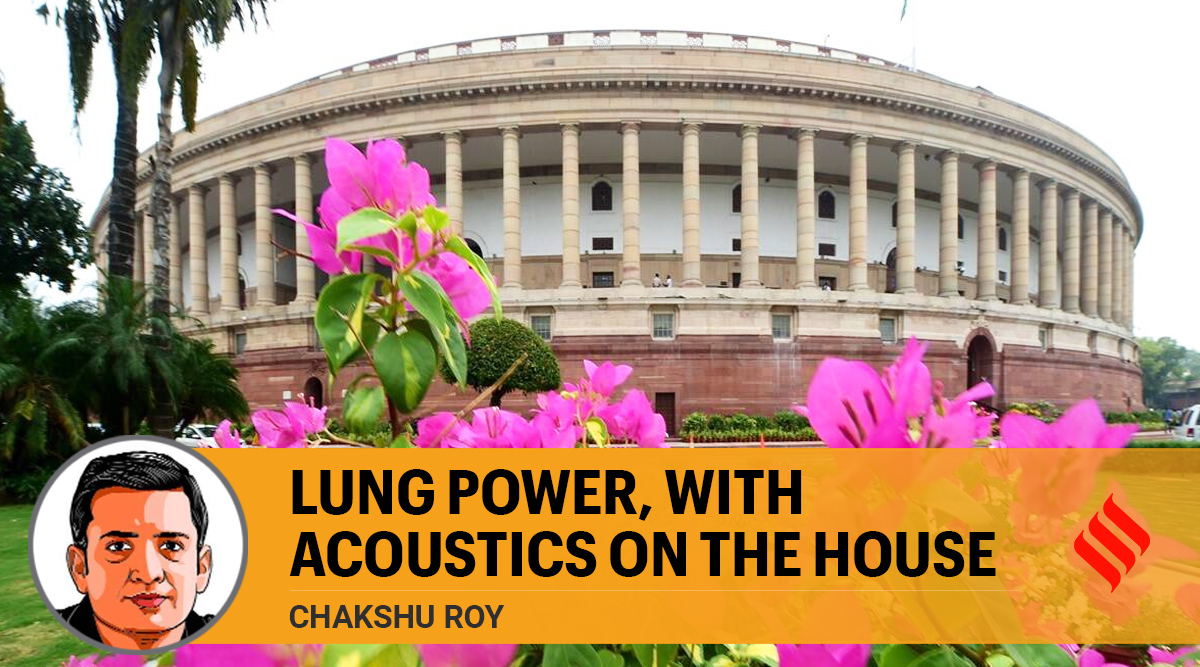Chakshu Roy writes: Herbert Baker, the architect of Parliament House, was aware of the critical role of acoustics in the legislative chambers.
Parliament is a venue for passionate debate and often slogan-shouting, as was evident in the recently curtailed Monsoon Session. In its debating chambers, every Member of Parliament is audible while making an argument or silencing an opponent. Being heard here is not simply a function of lung power and sound amplifying technology — both these aspects have to do with the acoustic design of the chamber.
This design was made possible in our Parliament by collaboration between architects, academics, a Nobel prize-winning physicist and an engineer of Spanish origin.
In a debating chamber, the ability to hear and be heard is of utmost importance. An imperfect acoustic design can negate the useability of such a venue. Since sound reflects and gets absorbed in surfaces, managing it in large spaces is a complex issue. If sound reflects more, words may blend, and if it bounces less and gets absorbed, a listener might have difficulty hearing the speaker. In 1922, the County Hall in London was criticised heavily as reporters in its press gallery had a hard time making sense of the proceedings in the chamber.

In 1921, the foundation stone of the Parliament building was laid, and a year later, Baker engaged Hope Bagenal, a British architect and acoustician, as consultant.
Baker also convinced the government of India to commission research at the Building Research Station in London. The focus of the study was on acoustics in the chambers whose construction had started in Delhi. The research also involved two physicists, Nobel prize winner Sir William Bragg and senior lecturer George Sutherland. Bragg had shared a Nobel prize with his son in 1915 and had worked on acoustics for submarine detection during the First World War.
Because of his interest in acoustics, Bagenal was in touch with a Harvard academic, Wallace Clement Sabine, who pioneered architectural acoustics. The Englishmen were finding it challenging to develop a workable absorbent material for the ceiling. Sabine had patented a sound-absorbent tile with a talented Spanish engineer, Rafael Guastavino, who immigrated to America. The acoustic tile had “over six fold the absorbing power of any existing
masonry construction and one third the absorbing power of the best known felt”.
There were several hiccups and misunderstandings before Herbert Baker could order acoustic tiles with Rafael Guastavino’s company in New York. Baker wrote in a letter that on his death, people would find the word acoustic tiles engraved on his heart.
The ceiling of the assembly, council, and the prices chamber would need approximately 40,000 acoustic tiles. Within a few months of the inauguration of the Parliament building in 1927, a loose tile would fall from the ceiling to the floor, nearly hitting the commander in chief.
Apart from this aberration, the acoustic design would work perfectly. The London Times would declare that “every practical suggestion of acoustic science was adopted in the design and roofing of the chamber and the result so far seems to be perfect”.
Source: Read Full Article


